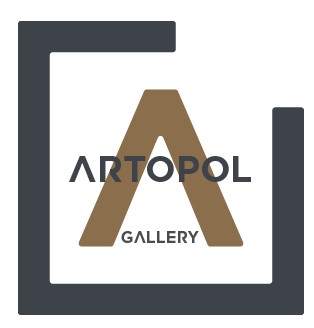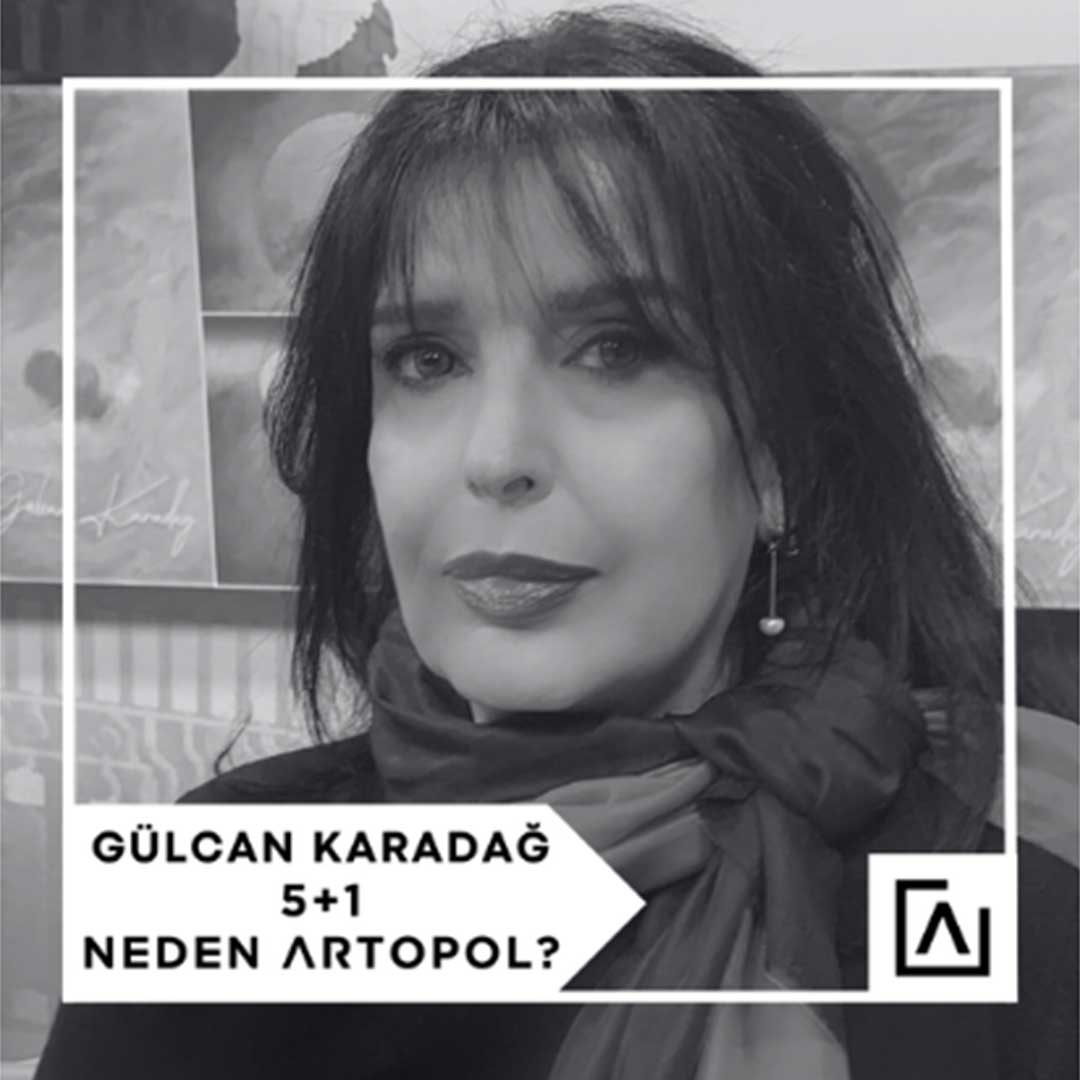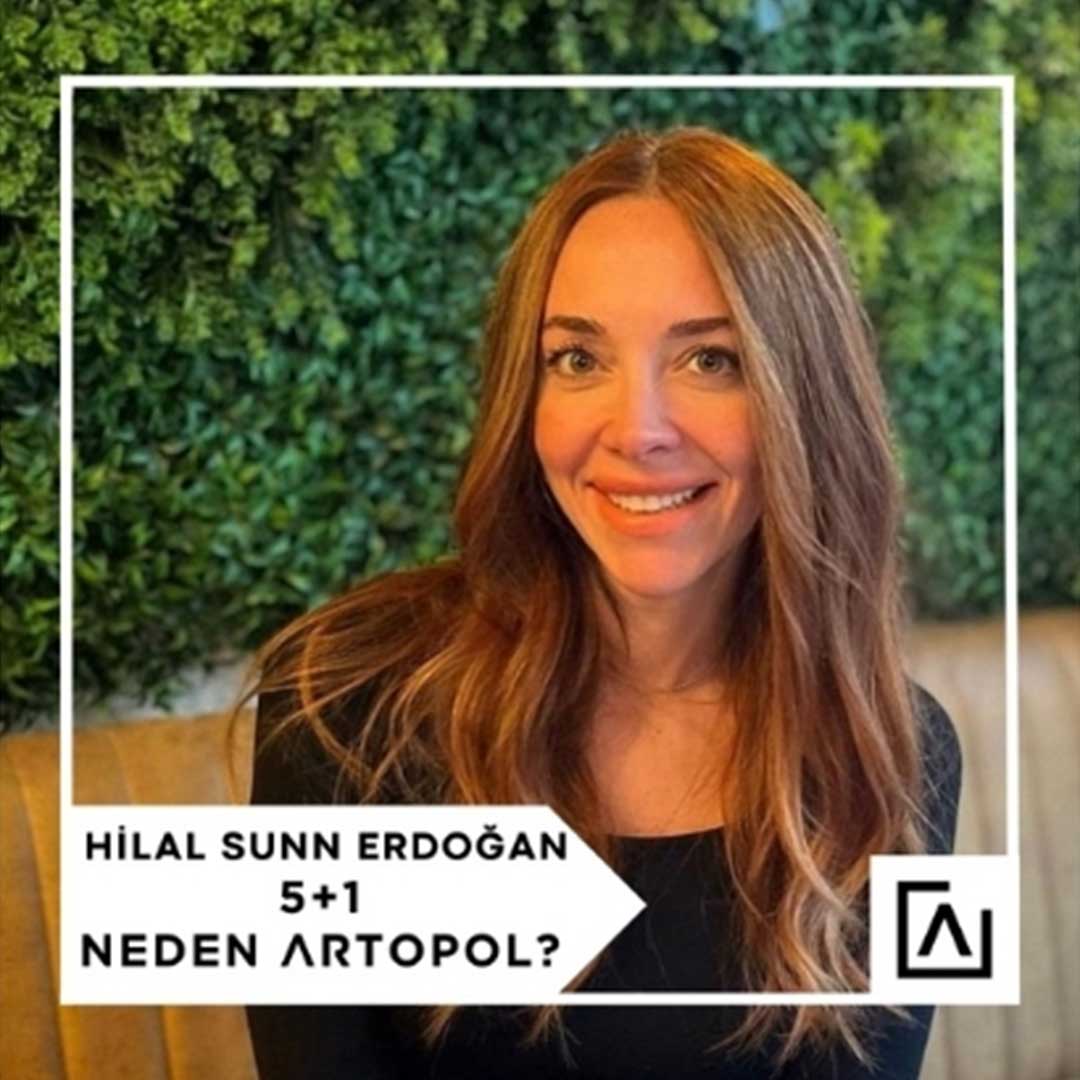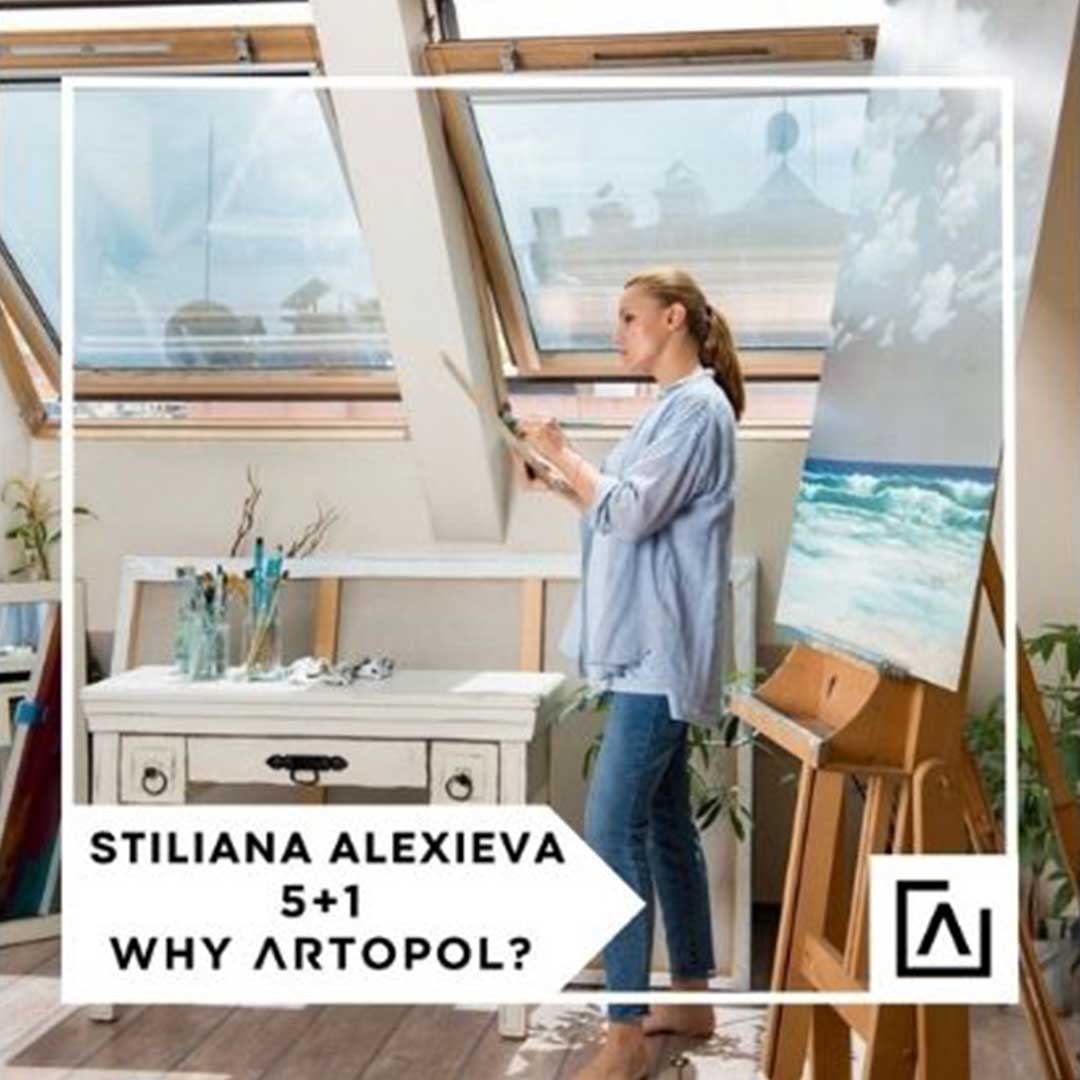Artopol Gallery: Why Artopol Gallery?
ELİFKO: First of all, honesty is very important to me. Artopol is transparent and straightforward in every aspect, which is something I really pay attention to. They do their job with great quality and have a solid artistic line.
AG: Artopol’s priority is accessible art. As an artist, how do you evaluate this?
ELİFKO: I think Turkey is still in an early stage when it comes to art. That’s why the first step is to make people love art and get used to it. For me, sincerity and pricing are the first steps in that process. I want people to be able to reach my works. Instead of being in only ten collectors’ homes in Turkey, I’d prefer my art to reach beginners as well. Getting more people started in this field is important. That’s why I’ve been gradually increasing my prices over time. You have to make people love it first, capture their interest. Sales come after that...
AG: At that point of capturing interest, should the artist take the lead? For example, should we think like this: should the artist try to attract attention through their works, or should the gallery facilitate communication between the audience and the artwork?
ELİFKO: It’s something that can only happen through collaboration between both sides. You have to speak the same language. Some people may not like or support your works, but that doesn’t mean they’re bad. Maybe there’s an adaptation process involved. You have to spread it over time. We should try to find a language that people can understand. Many artists make it so complicated that people can’t grasp it and therefore can’t understand the work. Sometimes, it’s necessary to simplify the terms and be more understandable.
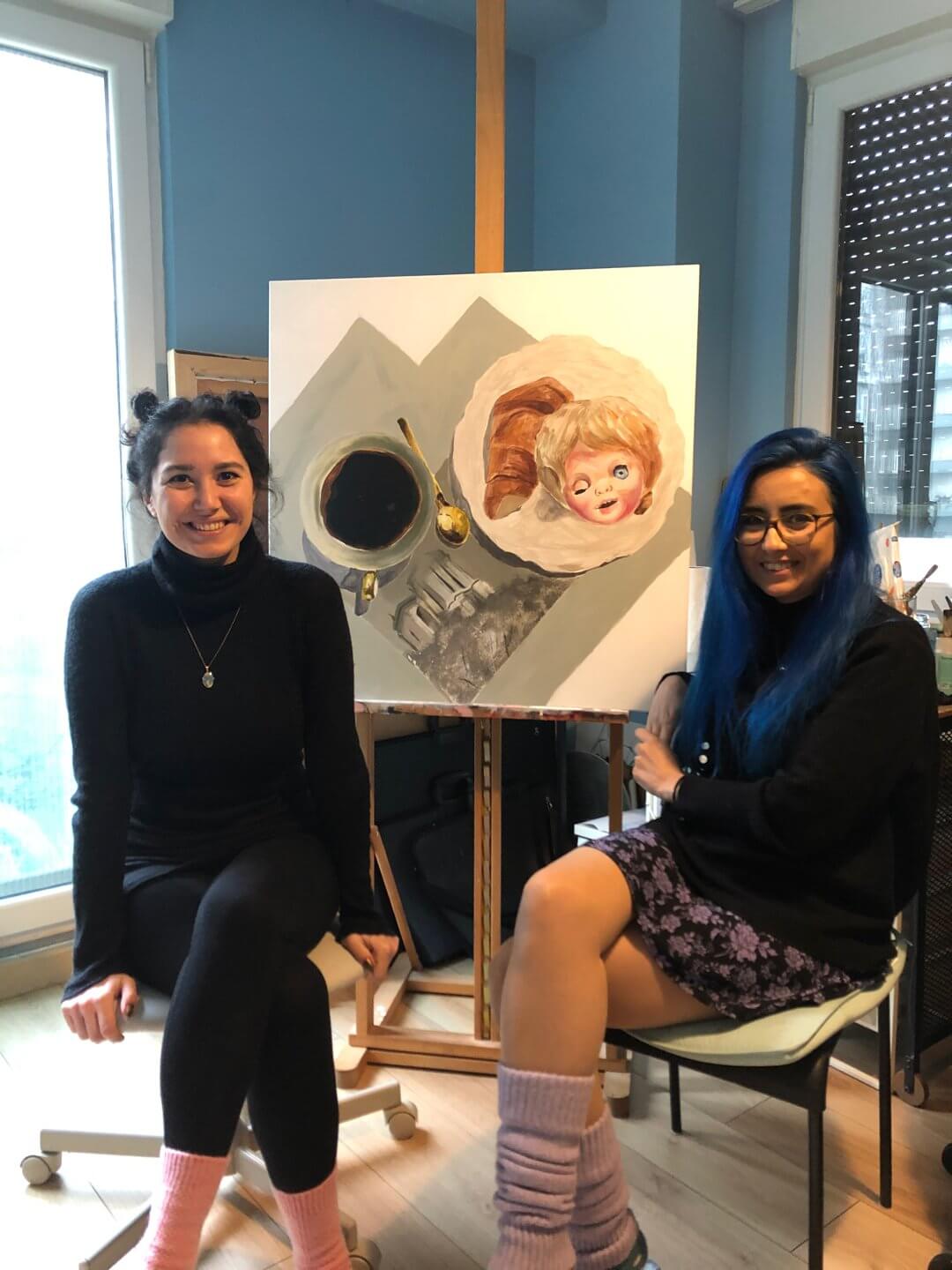
AG: The lack of art knowledge among the audience can also be an issue. How do you feel when people can’t understand your works?
ELİFKO: If they don’t understand, they should be curious and do a little research. It doesn’t have to be deep reading. At the very least, they can talk to the artist or the gallerist. That way, they can start learning easily.
AG: But it can be intimidating. People are already shy, and that makes them even more hesitant.
ELİFKO: People often don’t know what to look for in an artwork, and they’re afraid to say they don’t know. They pretend to know but actually understand nothing. Viewers should say, “I don’t know, and I’d like to hear it from you.” It’s like using an audio guide in museums — it makes the experience much more enjoyable. There are always things we don’t know; it’s impossible to know everything.
AG: Do you notice differences in interest towards your works — for instance, in different cities or exhibitions?
ELİFKO: Yes, of course. For example, I once participated in a fair in Ankara, and there wasn’t much interest. But when I returned to Istanbul, those same works sold quickly.
AG: What do you attribute that difference to?
ELİFKO: I think people prefer to buy from artists they’re more familiar with. The art scene in Istanbul is much broader. There are more exhibitions, which means more visibility. So, in a way, you encounter the audience more often, and they see that you’re consistently producing, which builds their trust. That’s how it should be. If I were a collector, I’d also prefer to buy from an artist who’s actively working.
AG: Have you noticed similar differences between your series — for instance, between your stitched portraits and your plate series?
ELİFKO: Yes, there’s a difference. Most people love the stitched series — it appeals to a wide audience. Only a few are disturbed by the stitches, like those who are uncomfortable with the idea of a needle piercing the canvas. But that’s exactly the feeling I want to evoke. For example, I have portraits of crying children, but people hesitate to buy them even though they like them a lot. Still, I’ll keep painting them — I love them. My plate works, on the other hand, are more preferred by professional collectors. The more a work disturbs people, the harder it becomes to sell.
AG: At Artopol, we value online sales for accessible art. As a young artist, how do you view online art sales?
ELİFKO: Online sales are actually difficult. I create the work, take photos, and then look at them thinking, “This isn’t it — the effect isn’t the same!” My works have a stronger impact in person, and it’s hard to reflect that. The same goes for videos. I think buyers struggle with this too. Seeing a painting on a wall or a sculpture on a pedestal is very different from viewing it online.
But online sales are necessary. They should go hand in hand with physical exhibitions. Someone might see the work at an exhibition, hesitate, then later come across it online and think, “I liked this one!” Still, seeing it in person will always have an advantage.
AG: What do you think are the right steps in the art market? As an actor in the art world, aside from accessibility, what else should be done? For example, what do you expect from a gallery in terms of sustainability?
ELİFKO: I believe artists should be supported and their rights protected — but artists should also respect the gallery’s rights. As long as this mutual balance exists, relationships will be healthier. Especially, the prices between gallery sales and studio sales should be the same. Otherwise, both sides get hurt. For young artists, the hardest part is maintaining consistency because they don’t always think long-term. Sometimes, you need the money, a buyer appears, and you immediately lower your market value. But once you establish yourself, you must maintain that consistency.
There’s also another side to this — working with different galleries or pricing differently... But we must remember: it’s very difficult to evaluate all works under the same framework. So, even among the works of the same artist in different galleries, there can be variations, even between pieces of the same size. Because it’s not just about dimensions. Each work requires different effort and yields different results. You can’t just say, “I saw the same thing at another gallery for a lower price.” If it were the same, it wouldn’t be art — every work is unique.
That’s why a strong dialogue between the artist and the gallery is essential to convey the works accurately to collectors.
AG: Recently, there’s been a growing interest in art. People attend seminars, read more, visit exhibitions and fairs. Do you think this is artificial, or can we say art is becoming more established?
ELİFKO: Yes, it does have an artificial side. Some people attend these events just to take photos. Still, I see something positive in it — it raises awareness. It can spark curiosity. What’s important is managing that interest properly. Maybe the sustainable progress in the art scene will come from this attention. Using social media effectively is key...
AG: Your works have stories, themes, messages. Can you tell us a bit about them?
ELİFKO: I don’t start from a single concept. There are beautiful men and women with stitches across their faces. That breaks the “we’re all perfect and happy” illusion of social media. Then there are the children... In my paintings, they’re always crying because they’re the most transparent when it comes to expressing emotions.
AG: So, while one side hides their truth, the other expresses their feelings openly.
ELİFKO: Exactly. The children do that through crying. My plate series, however, explores another theme. It was inspired by Thomas Hobbes’ phrase, “Man is a wolf to man.” After graduation, I worked in various jobs, and I drew from what I observed there — everyone’s trying to trip each other up, constantly competing, and somehow, the cruel ones are admired the most. Eventually, I realized that consuming people can be as enjoyable as eating a delicious meal. That’s how my plate series began — it’s about plates and the people being consumed on them.
Over time, I plan to evolve the series: maybe depicting elderly or fragmented figures on empty plates — exploring the idea of being consumed by time.
AG: So, could we say — people consumed by time?
ELİFKO: Exactly — as if there’s no return, as if everything has ended...
AG: What do you think when people interpret your works completely differently?
ELİFKO: I actually love when that happens because it inspires me for my next work. Sometimes, my next piece even takes shape based on those interpretations.
AG: In your compositions, we often see materials like thread — traditional ones like canvas, oil paint, and thread — but when combined, they create a contemporary language. You sew over academic-style figures with a sewing machine, breaking traditionalism. As an artist using unconventional materials, how do you view today’s art scene, especially with technology’s influence?
ELİFKO: It’s inevitable. The whole world evolves with technological advances, and art can’t remain unaffected. We use Photoshop to sketch, create digital art, draw on tablets... It’s a necessary evolution and will definitely have a lasting place in art.
AG: Are you planning to add more materials to your current range?
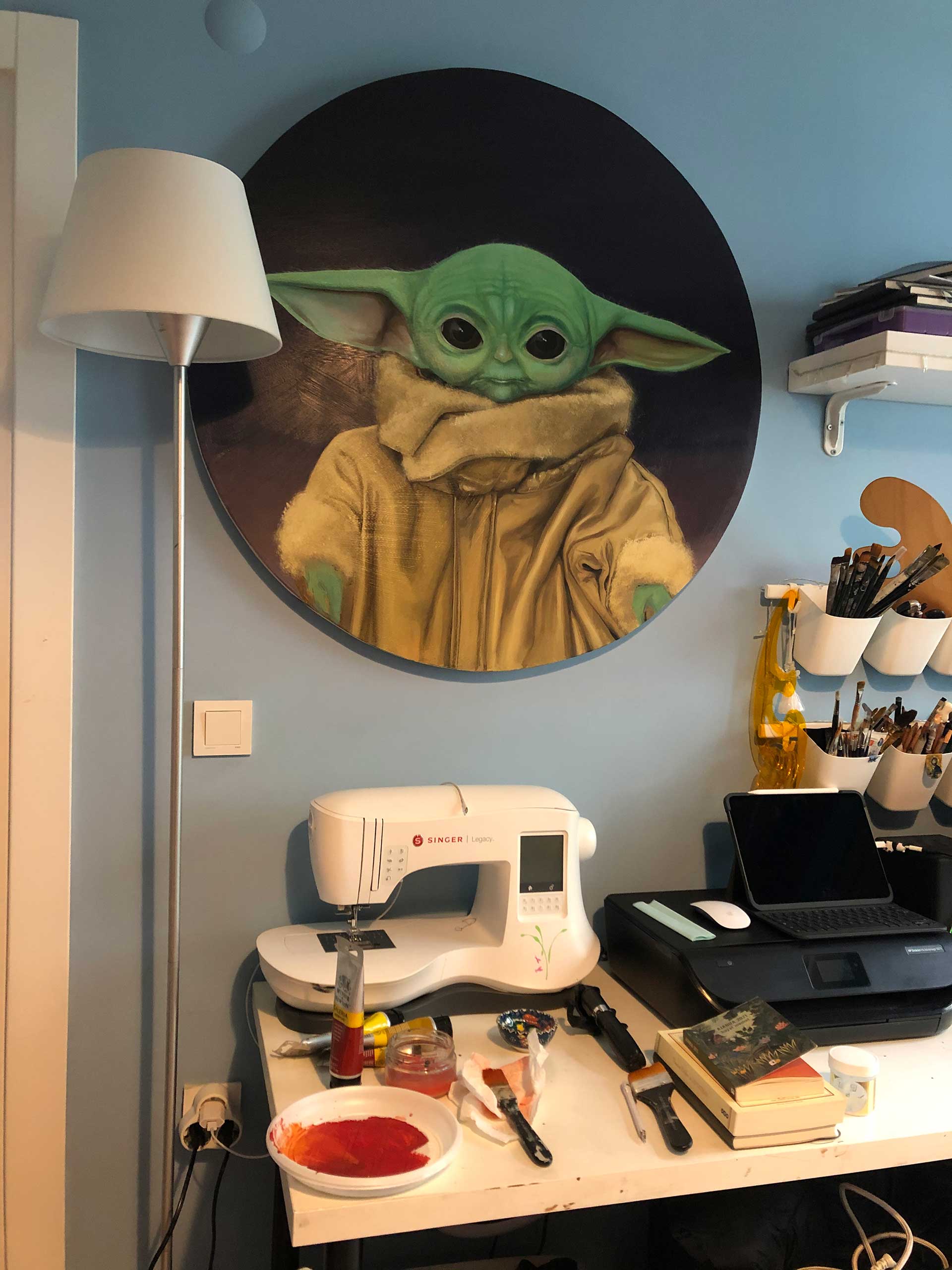
ELİFKO: I’ve always experimented with different materials. I have a constant desire to try new ones, though it can be challenging. I often work through trial and error since I don’t have people around to consult. The first five years after graduation were full of confusion — I tried many things. Even the stitching started accidentally when I found old sketches I had hand-sewn. I thought I wasn’t doing anything meaningful back then, but apparently, I was laying the foundation for what I do today.
I’ve tried many things — even watercolor with bleach. I experimented with markers on canvas too. They worked at first, but later the colors faded, so I retrieved the sold works and repainted them with oil or acrylic. It was tiring and frustrating, but I love experimenting with material diversity — especially with things that affect the paint’s texture.
AG: Do you also experiment with different surfaces?
ELİFKO: Yes, I burned wood and painted over it with oil paint once — it was amazing, but it takes you into a different world with its own challenges. The materials behave differently, and you end up creating a completely separate series.
AG: True, innovation always takes time.
ELİFKO: Yes, but I’ll keep experimenting. Maybe a few years from now, I’ll work on metal surfaces — bending and painting them. What matters most is that it excites me. If it excites me, I want to make it.
AG: Your subjectivity as an artist comes through in your use of materials.
ELİFKO: Definitely — especially with auxiliary materials. I love and use anything that enhances my work.
AG: What about the future? Do you have projects or plans you want to pursue?
ELİFKO: I used to make small works inside glass frames — I painted directly inside them. In the future, I want to create larger ones. They’re costly, so I’m holding off for now, but eventually, I want to focus on them — maybe even become known for them.
AG: Will these works also be figurative, or are you considering abstract approaches?
ELİFKO: They’ll be figurative too, but who knows — I might change my mind ☺
AG: Let’s talk about your process. How does your journey begin?
ELİFKO: If I’m continuing a series, I start by forming the images and color harmony in my mind, then sketching. I experiment a lot on sketches or digitally in Photoshop. Once I’m sure, I move to the canvas. That makes me work faster because I hate redoing large areas. My sketch phase takes a long time — I don’t move on until I capture exactly what I want. I feel it when it’s right.
AG: When you compare your old and new works, what differences do you notice? Has your technique changed, or just your style?
ELİFKO: My technique has improved a lot — I’ve worked really hard. The first five years after graduation, I didn’t produce finished works, but all that experimentation reflects in what I do now.
AG: Do you have any works you dislike?
ELİFKO: Of course — I’ve painted over all of them.
AG: Any of those ever sold?
ELİFKO: Not really — I only started selling after finding my direction. Before that, I had one sale. I was on my way to my graduation exam at Mimar Sinan University, carrying my works, when a man stopped me and asked if I studied there. He asked if I sold my works, and I said, “Maybe, but I’m late for my exam!” I didn’t think much of it, just gave him my number. After the exam, I met him at a tea garden, he looked at the paintings, liked one, and bought it.
AG: How did you decide on the price?
ELİFKO: I just made it up — I had no idea about pricing. Nobody had ever told me how much my work was worth. I was still a student, so I just said something, and he knew it would be cheap.
When I think about that piece now, it feels strange — almost like it wasn’t even mine. That was my first sale.
AG: Let’s talk about art itself. Everyone has their own definition of it. What’s yours?
ELİFKO: I see art as a language — something that can be learned. I believe artists are born with a natural ability. For example, I had it, but I didn’t notice it — my teacher in middle school did. Everyone in class would ask me to draw for them, but I still didn’t realize it until my teacher pointed it out. So, I think artistic talent is innate — a language that others can later learn.
AG: You mentioned creativity — something that comes from within. Do you ever feel stuck? How do you move forward then? How was the pandemic period for you in that sense?
ELİFKO: It was a very strange time for me — full of ups and downs. 2020 was actually my best sales year. Sometimes I worked intensely, other times I didn’t even want to walk past my canvas. But as sales increased, I got motivated and added new ideas. It was a discovery period. When I feel blocked, I go out — sometimes I don’t approach my work for a week and act like it doesn’t exist. It helps me clear my mind. I also feed myself intellectually through research, but when I’m stuck, I stop everything — emptying my mind helps me restart.
AG: Are there any major art movements that inspire you?
ELİFKO: Yes, my plate series was inspired by Surrealism. Back in school, Surrealism felt distant to me, and so did still life. But now, both are present in my works. I guess we end up living what we once avoided.
AG: Any artists you follow?
ELİFKO: I really admire Yue Minjun — especially his brushwork.
AG: Thank you for this lovely conversation.
ELİFKO: Thank you.
Interview: Zeynep Dikmen
